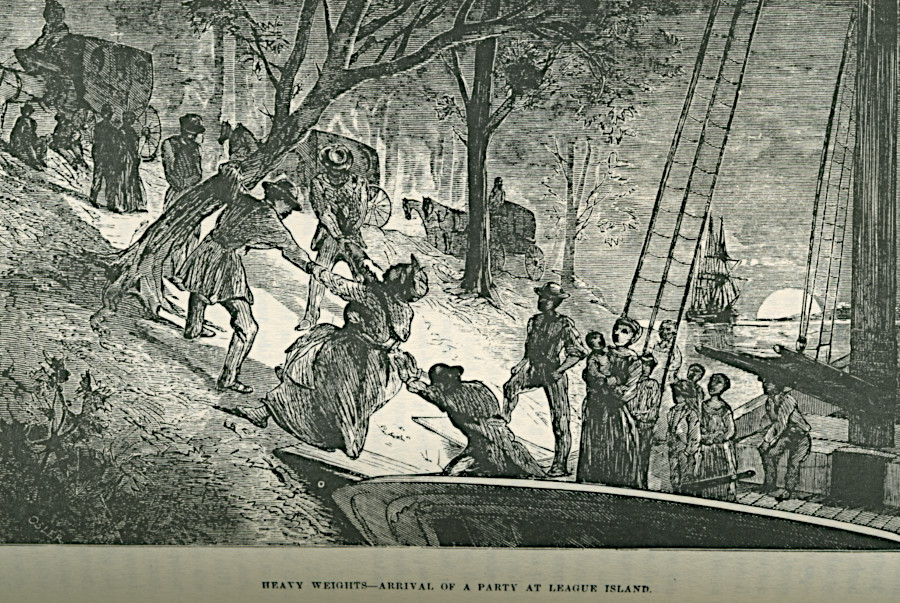
the Underground Railroad included escaping slavery via a boat to Phliadelphia
Source: Slavery Images: A Visual Record of the African Slave Trade and Slave Life in the Early African Diaspora, Fugitive Slaves from Norfolk, Virginia, July 1856

the Underground Railroad included escaping slavery via a boat to Phliadelphia
Source: Slavery Images: A Visual Record of the African Slave Trade and Slave Life in the Early African Diaspora, Fugitive Slaves from Norfolk, Virginia, July 1856
Enslaved people fled to freedom when they identified a good opportunity to escape, and at times when the risk was very high. The destination was a free state north of the Mason-Dixon line, or even Canada. Flight all the way to Canada was ideal after passage of the Fugitive Slave Act by the US Congress in 1850. That Federal law required officials in the northern states to cooperate with slave hunters, and to assist in returning fugitives to enslavement in a southern state.
Supporters of those fleeing slavery operated safe houses to shelter the enslaved, and provided food, clothing and directions. "Conductors" led groups of fleeing people between safe houses.
One of the most fampus conductors was Harriet Tubman. She had escaped enslavement from the Eastern Shore of Maryland in 1849, and returned to Maryland a dozen or more times to assist 60-70 members of her family members and others helpd in slavery to flee north.
Tubman also assisted Charles Nalle in 1860. He had fled Stevensburg in Culpeper County in 1858 when his enslaver, Blucher Hansborough, decided to sell his "property." He reached Troy, New York, but a lawyer there alerted Virginia officials about his presence. Nalle was arrested by a United States Marshal in 1860. A crowd of mostly African Americans enabled Nalle to escape imprisonment twice, and later citizens of Troy purchased Nale from the Hansborough family so he could stay in New York as a free man.1

the threat of being sold at auction incentivized enslaved people to flee via the Underground Railroad
Source: Slavery Images: A Visual Record of the African Slave Trade and Slave Life in the Early African Diaspora, Slave Auction, Richmond, Virginia, 1853

one way enslaved people fled Virginia was by water, catching boats in the port cities of Richmond, Petersburg and Norfolk
Source: Library of Congress, Underground railroad map of the United States, ca. 1838-1860